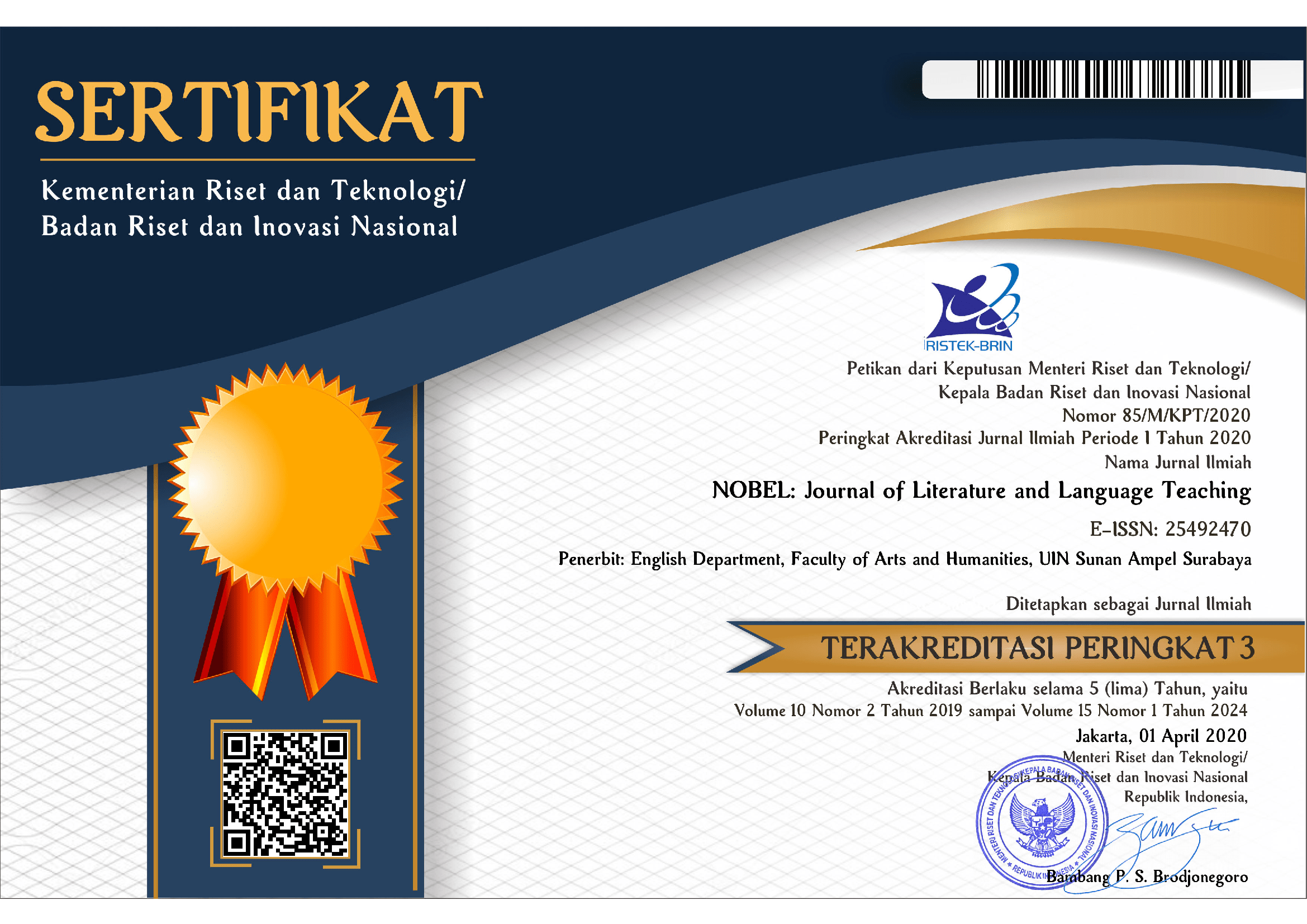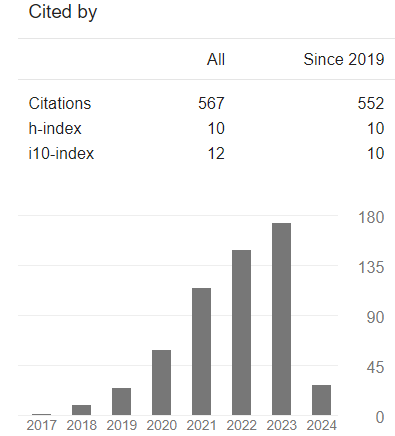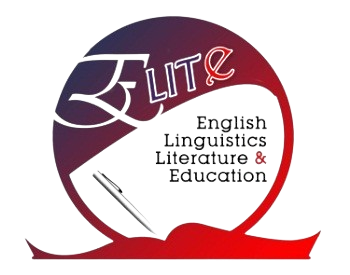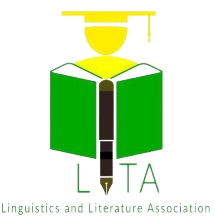The Use of Response Tokens In Waiting for Godot by Samuel Beckett
DOI:
https://doi.org/10.15642/NOBEL.2016.7.2.137-146Keywords:
response tokens; Waiting for GodotAbstract
This study discusses the use of response tokens in Waiting for Godot written by Samuel Beckett. Specifically, it examines kinds and the functions of response tokens uttered by the main characters. This research uses descriptive approach to obtain rich description and to understand response tokens in Waiting for Godot. The data were taken form Vladimir's and Estragon's utterances. The key findings suggest that the types of response tokens in the drama are single response token, response token preceding expanded response, premodified response token, negative token and doublet and also triplet token. Meanwhile, the functions of response token include the function of continuers, acknowledgement, newsmarker, change-of-activity, assessement and brief question token.
Downloads
References
Duncan, Starkey. (2011). Some signals and Rules for Taking Speaking Turns in Conversation. Chicago: University of Chicago.
Gardner, Rod. (2005). When Listeners Talk: Response Tokens and Listener Stance. Philadelphia: John Benjamin Publishing.
Garratt, J.E. (2009). Significance of Adjacency Pairs as Building Blocks of Social Interaction. Colchester: University of Essex.
Jefferson, Gail. (1984). Notes on a systematic deployment of the acknowledgement tokens „yeah‟ and „mm hm‟. Papers in Linguistics 17 (2): 197–216
McCarthy, Michael. (1991). Discourse Analysis. Cambridge: Cambridge University Press.
McCarthy, Michael. (2003). Talking Back: “Small†Interactional Response Tokens in Everyday Conversation. Nottingham: Lawrence Erlbaum Associates. 36(1), 33–63.
Mullins, Joanna. (2012). Analysing Conversational Data with Regards to Interactional Structures: Turn-Taking and Adjacency Pairs, also Face and Authority. Colchester: University of Essex.
Paltridge, Brian. (2006). Discourse Analysis – An Introduction. London: Continuum.
Pomerantz, Anita. (1984). Agreeing and disagreeing with assessments: Some features of preferred/dispreferred turn shapes. In Atkinson and Heritage (eds), 57–101.
Schiffrin, Deborah. (1987). Discourse Markers. Cambridge: Cambridge University Press.
Schneider, Klaus P. (1988). Analyzing Phatic Discourse. Marburg: Hitzeroth.
Tanaka, Hiroko. (1999). Turn-taking in Japanese Conversation: A Study in Gramar and Interaction. Philadelphia: John Benjamin Publishing.
Young and Lee. (2004). Identifying Units in Interaction: Reactive Tokens in Korean and English Conversation. Journal of Sociolinguistics 8/3, 380- 407 Oxford: Blackwell Publishing.







